How to improve the 24-hour response rate?
12/13/2022
AbstractOnline agents are indispensable to sellers: they are the first point of contact for customers.Online agents play a vital role in the delivery of pre-sales, mid-sales, and after-sales service and have a direct influence on the purchase intentions and user experiences of customers. As a result, improving the productivity of online agents is extremely important. That's why we've written this guide for your reference, in hopes that it will help you improve the performance of agents and the quality of service they provide.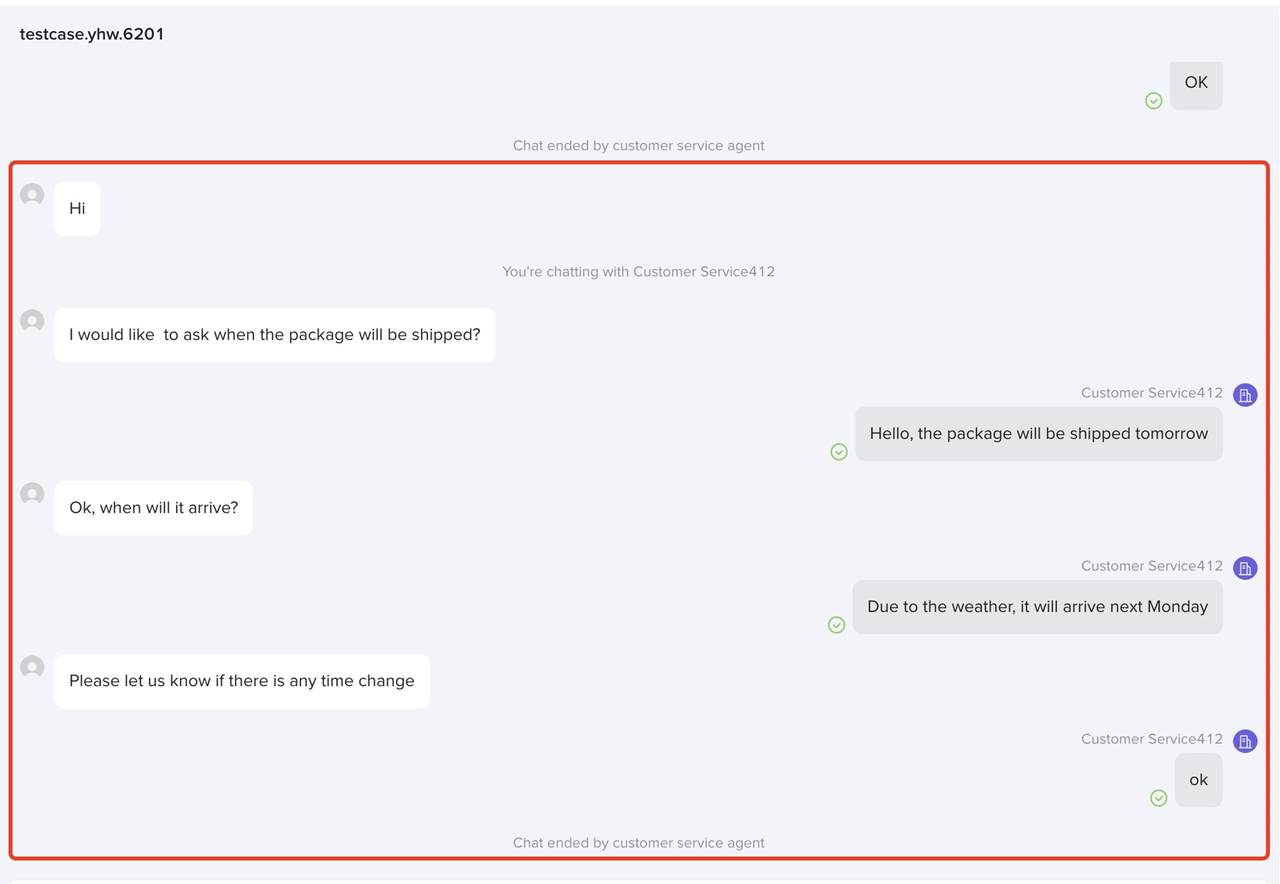
(In these screenshots, the shop is on the left-hand side of the chat page and the customer is on the right-hand side)
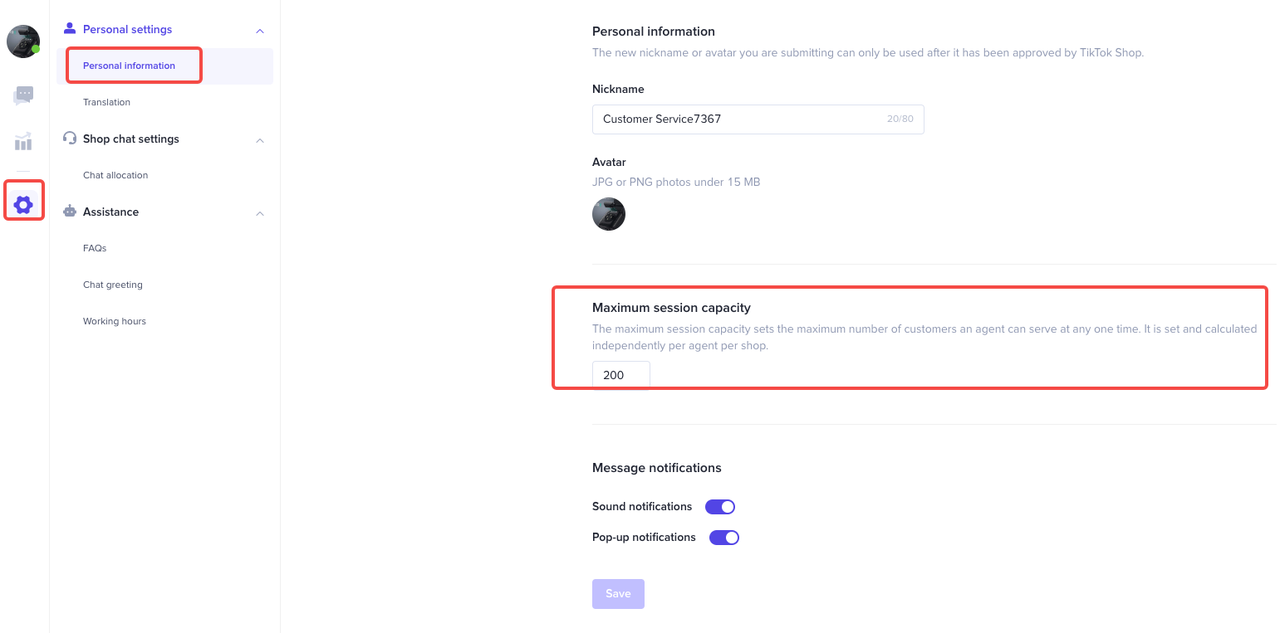
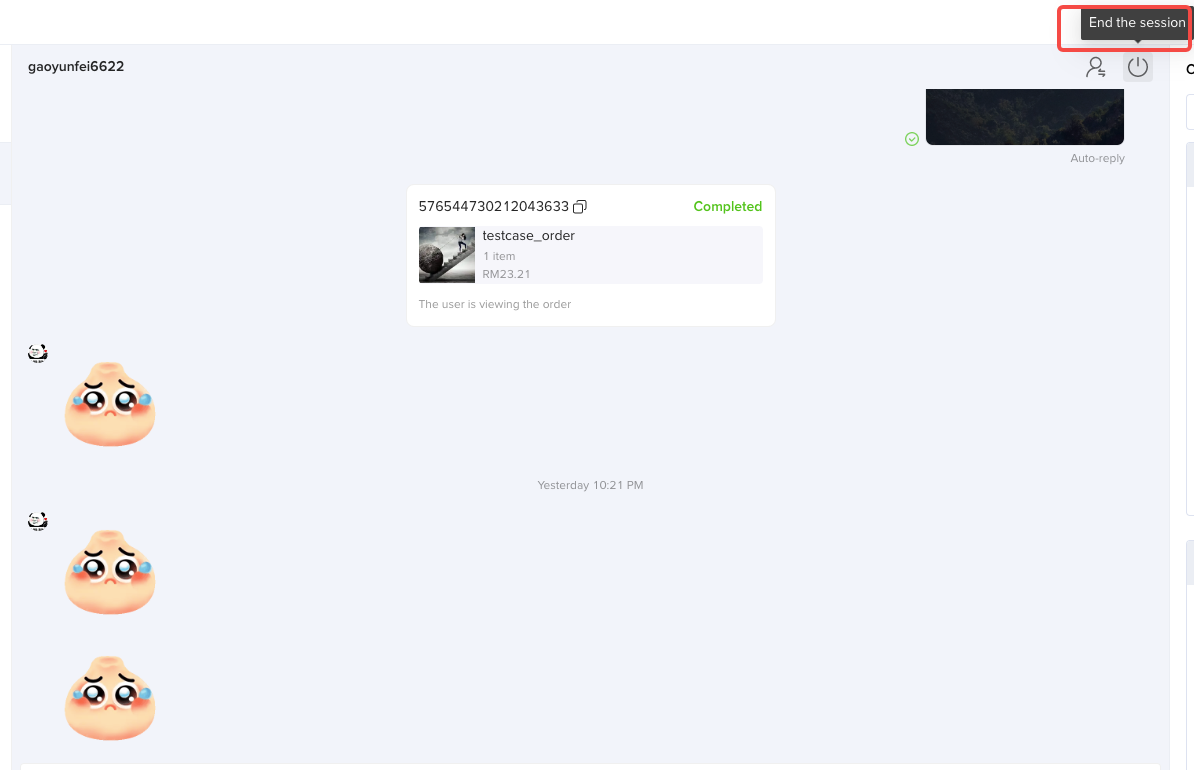
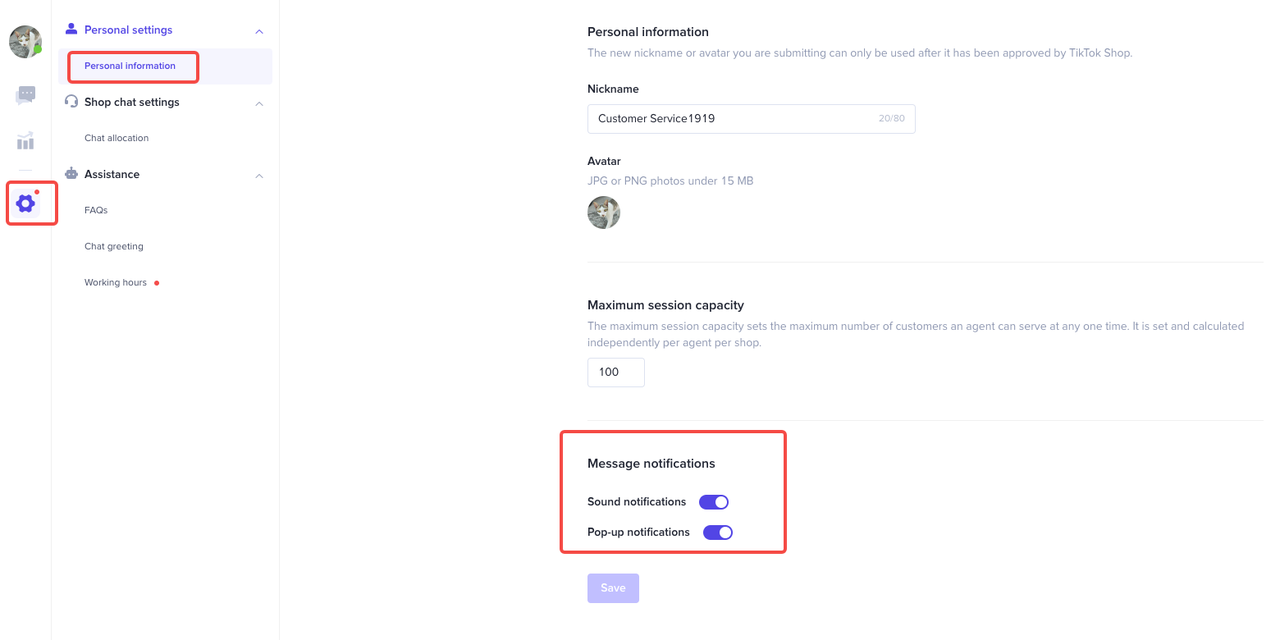 Mobile app (seller app):
Mobile app (seller app):
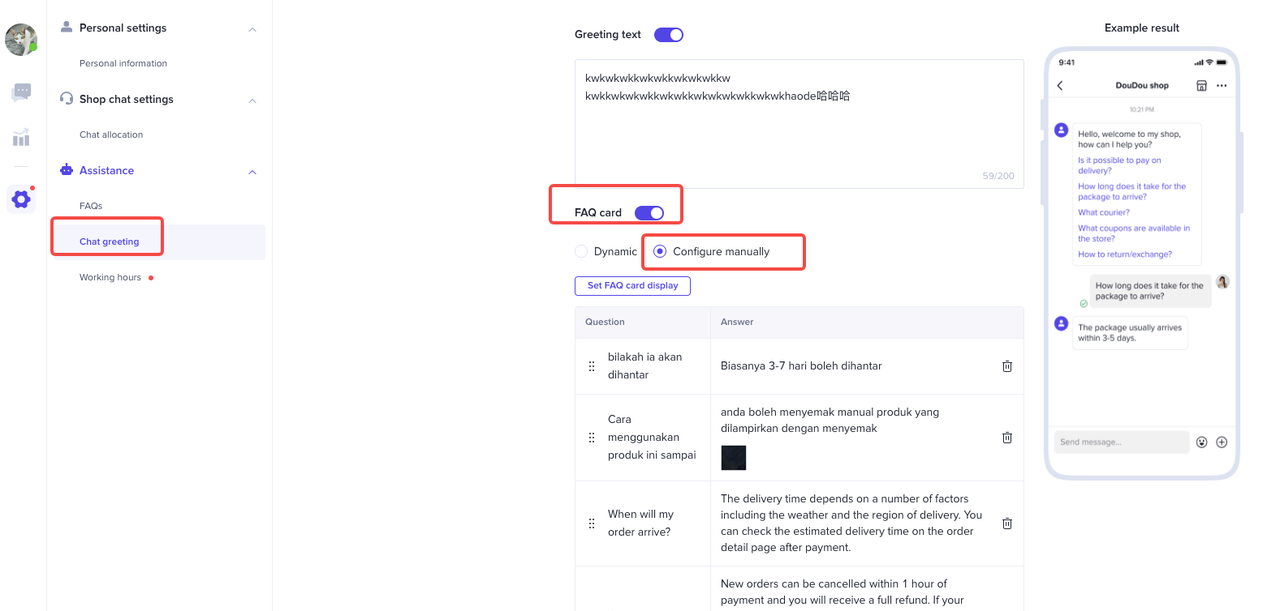
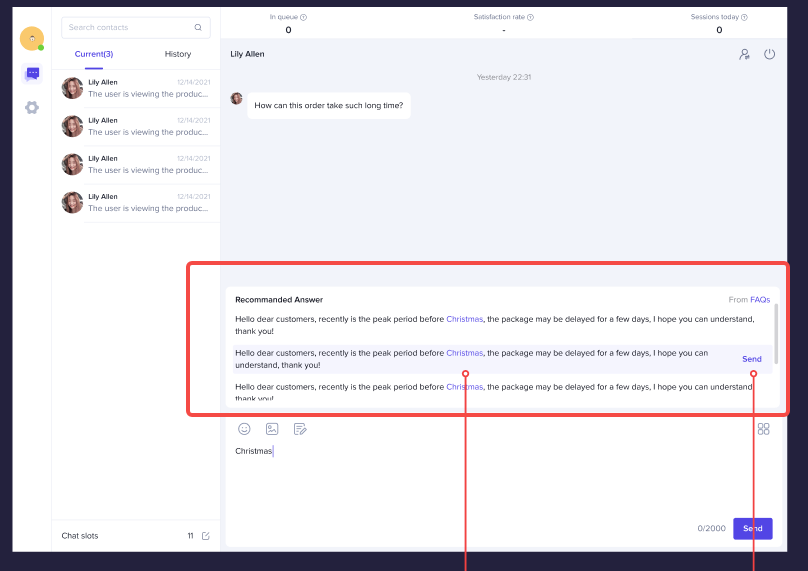
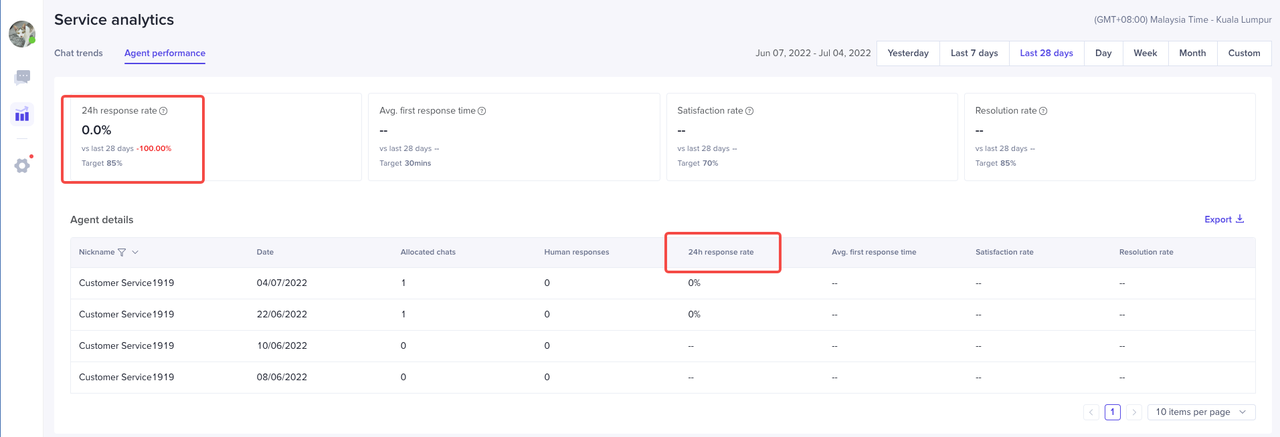 Final tips:
Final tips:
1. What is the 24-hour response rate?
1.1 Definition of "session"
Session: A single instance of reception by an agent that has a clear start and end point ("Chat started" and "Chat ended") and contains multiple messages. Sessions are typically started by the customer (by entering the chat interface and sending a message) and end with the session either being closed by the agent or automatically by the system. The same customer may have multiple sessions in a day.In the image below, a single session is shown highlighted in red (the customer is on the left and the agent is on the right).
1.2 Definition of "24-hour response rate"
The 24-hour response rate refers to the total number of sessions started by customers responded to by agents within 24 hours over a given time period, expressed as a percentage.In other words: 24-hour response rate = Number of sessions started by customers responded to by agents within 24 hours / Total number of sessions started by customers.Note:- The first time the customer sends a message in the form of text, an image, a video, an emoji, a product card, an order card and so on constitutes the start of a session.
- Sessions started by customers during weekends and holidays are also counted.
- Sessions started by customers when the shop is in holiday mode are not counted.
- If, during a session, the customer clicks a question from the FAQ card, receives an auto reply, and does not ask any follow-up questions, the session is classified as being responded to within 24 hours. If the customer asks any follow-up questions (sends another message), then the agent must manually respond within 24 hours or the session will be classified as not responded to within 24 hours.
Customer has no follow-up questions (manual reply not required) 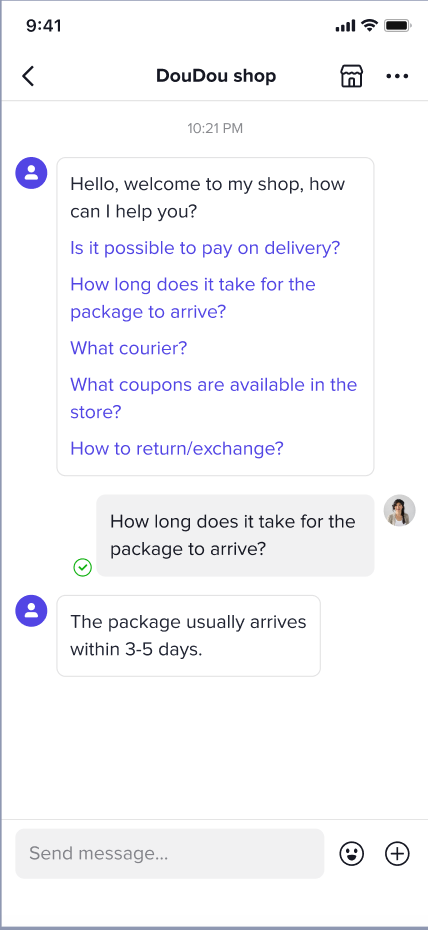 | Customer has follow-up questions (manual reply required)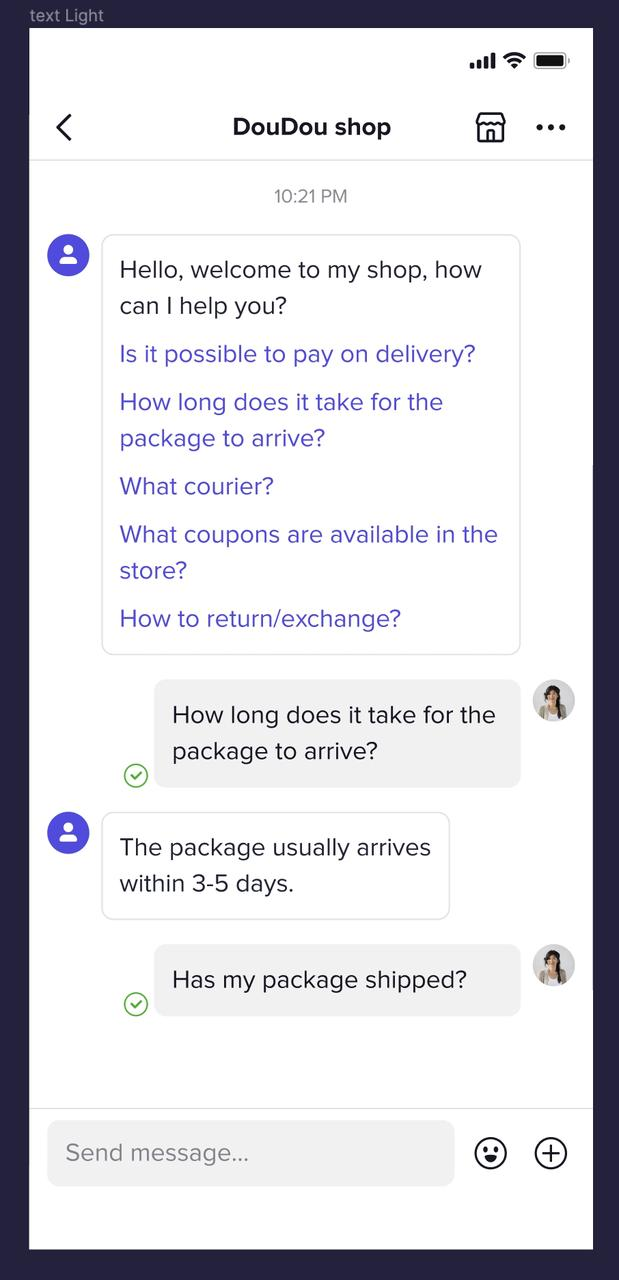 |
2. Why are prompt responses important?
- Replying to messages promptly allows us to resolve any doubts that customers may have, increases the customer's willingness to buy, improves order conversion rates, and boosts shop sales.
- Replying to messages promptly helps customers get a better understanding of products, reducing the likelihood of returns or refunds.
- Replying to messages promptly leads to increased customer satisfaction with shop services and reduces the number of complaints. Customers who are satisfied with the service provided by agents are likely to make additional product purchases from the shop.
- Replying to messages promptly may improve the shop experience score, making the shop more competitive.
3. How to improve 24-hour response rate?
3.1 Ensure that sessions are promptly allocated to agents
If you do not allocate sessions to agents promptly, they will not see these sessions soon enough and will not be able to reply in a timely manner. In the following scenarios, sessions cannot be allocated to agents:(1) A customer starts a session but the shop does not have any agents available online. (2) A customer starts a session and the shop has agents available online, but the session capacity is saturated (the number of sessions currently in reception has reached the maximum session capacity limit for individual agent) so the customer is waiting in queue.We suggest taking the following actions to prevent such situations from arising:1. Keep an eye on the number of people in queue
The number of customers in queue is displayed above the sessions list. Please keep a close eye on it and do your best to keep the number of customers in queue at "0" during working hours.
2. Adjust the maximum session capacity for individual agent
In other words, increase the maximum number of customers individual agent can serve for the shop at the same time. Doing so will result in more sessions being promptly allocated to agents.Agents can set this value according to both shop and individual circumstances. We usually suggest setting this value at a minimum of 200.Agents can set this value in Chat Tool > Settings > Personal Settings > Personal Information > Maximum Session Capacity.
3. End completed sessions promptly
If reception is complete and the customer's issue is resolved, the agent should promptly end the session after leaving a polite remark.If the customer has not responded to the agent's reply for some time, the agent may end the session by adding a polite closing remark such as: "I do not want to take up any more of your valuable time. Please do not hesitate to contact us again if you require further assistance. We're always happy to help. Thanks for your support and have a nice day!" Doing so frees up reception volume when saturated and gives customers waiting in queue access to sessions.
4. Schedule shifts effectively to ensure that agents are available during working hours
shop managers or customer service supervisors should schedule shifts effectively and monitor both the online status of agents and reception saturation to ensure that the shop has agents available during working hours. We suggest focusing on the following areas:(1) Do not allow agents on the same shift to go on break or offline at the same time, and always make sure at least one agent is online.(2) If the work saturation of online agents reaches 100%, you will either need to ask them to adjust their individual maximum session capacity, or ask other agents on break or offline to come back online as soon as possible.3.2 Turn on message notifications to promptly respond to customers
We suggest that agents turn on all message notifications in the Chat Tool so they can see customer messages the moment they arrive and respond promptly.PC: Settings > Personal Settings > Personal Information > Message Notifications Mobile app (seller app):
Mobile app (seller app):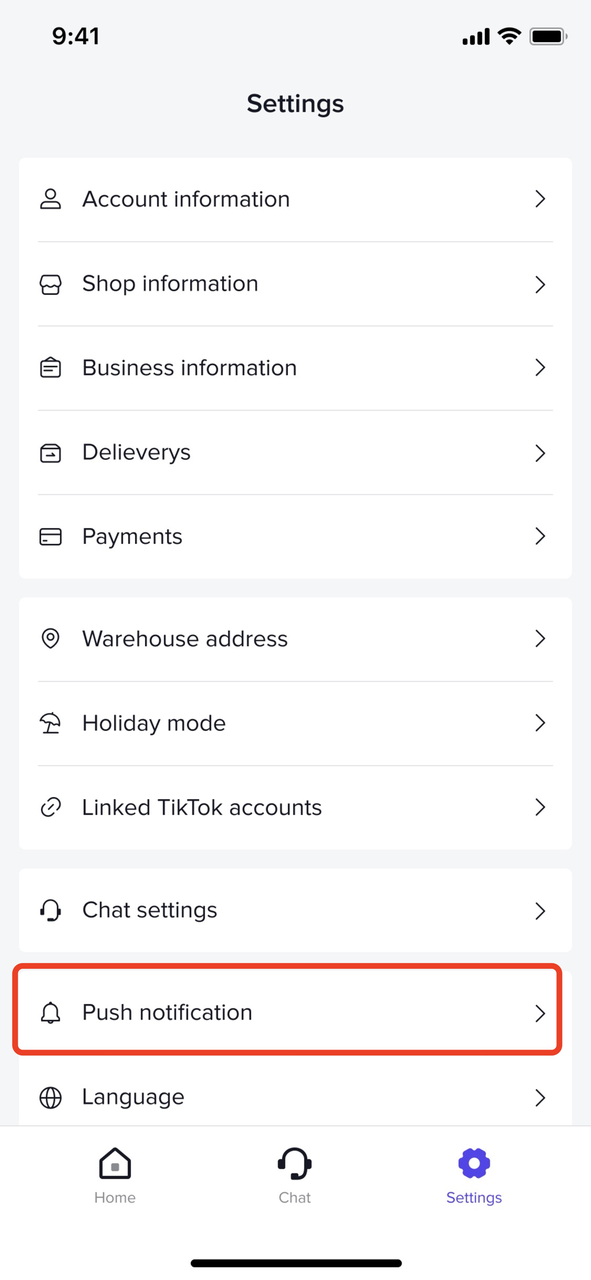 | 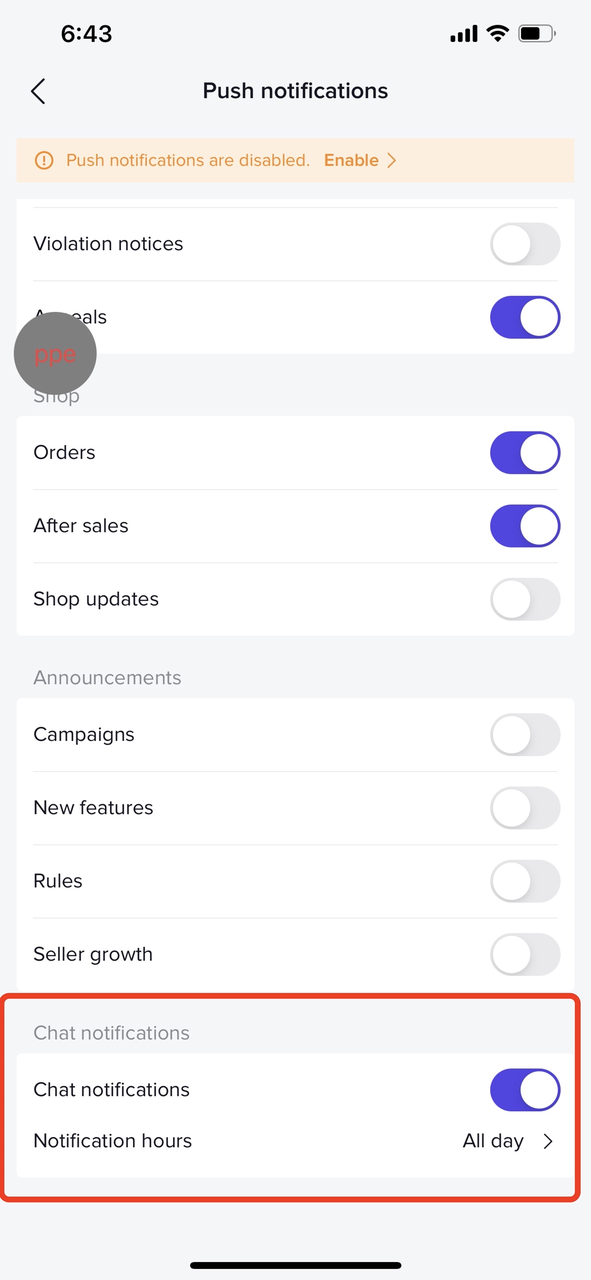 |
3.3 Use smart tools to respond more efficiently
shop managers can set up a FAQ database of questions frequently asked by customers together with standard replies. This can be done ahead of time for later use.To learn more, please see ""1. Configuring FAQ cards and auto replies
Once a FAQ database is set up, the shop manager can select five questions to place on the FAQ card. When a customer enters the shop's chat page, the FAQ card will automatically pop up and the customer can click on a question to automatically access a reply.If the customer does not have any follow-up questions, the customer's issue is considered resolved, the session is classified as responded to within 24 hours, and there is no need for an agent to manually reply. This shows how some frequently asked questions can be answered using FAQ cards.Thus, in order to limit the number of follow-up questions from customers, resolve as many issues as possible through FAQ cards and auto replies, improve the 24-hour response rate, and reduce the reply workload of agents, we strongly suggest doing the following:- We suggest configuring FAQ cards manually and selecting questions that customers ask most frequently about your own shop, for example types of products or shipping. Try to select questions with solutions that are as clear and specific as possible.

- Modify the platform's preset replies or add your own according to the actual circumstances of your shop. Ensure that replies are clear and accurate. For example:
2. Make use of assisted reply tools
When an agent replies to a customer's question, the system is able to:(1) Based on keywords sent by the customer(2) Based on keywords entered by the agentFind relevant replies in the FAQ database and suggest these to agents, allowing them to send quick one-click replies without having to type their responses out in full every time. This improves agent productivity and results in faster replies.If you come across any inaccuracies in the content of suggested replies, please let your shop manager know so that the content of the FAQ database can be changed!
3.4 Be proactive in identifying the customer's needs
If customers only send vague information such as an image, emoji, product card, or order card, do not just wait for them to send further messages before replying. Instead, take the initiative to ask them if there's anything they need help with as this will improve the 24-hour response rate.For example, here's how you could be proactive in identifying the customer's needs in the following scenarios:- A customer sends a single picture: "Is there anything I can help you with?"
- A customer sends a single emoji: "Is there anything I can help you with?"
- A customer sends a single product card: "Do you have a question you'd like to ask about this product?"
- A customer sends a single order card: "Do you have a question you'd like to ask about this order?"
4. How can we review this performance indicator?
You can review the 24-hour response rate for the whole team as well as for individual agents in the shop manager's service analytics dashboard. Final tips:
Final tips:- If your shop does not have any dedicated customer service agents, we suggest checking your Chat Tool daily so you do not miss any messages from customers! We also suggest dedicating some time each day to deal with customer messages.
- If your shop does have dedicated customer service agents, we suggest scheduling shifts effectively and making good use of system tools to help your agents become more productive!